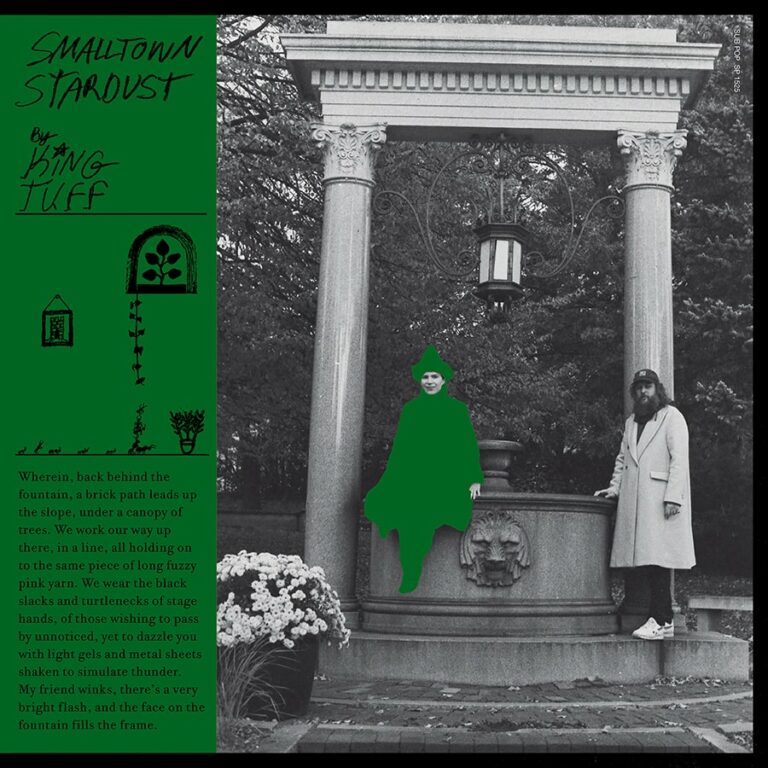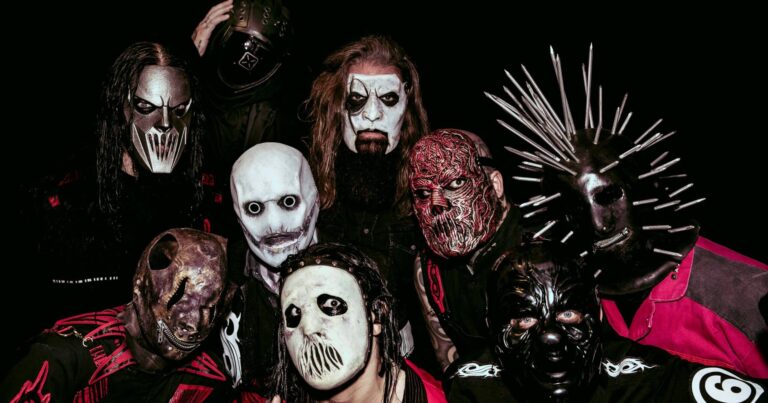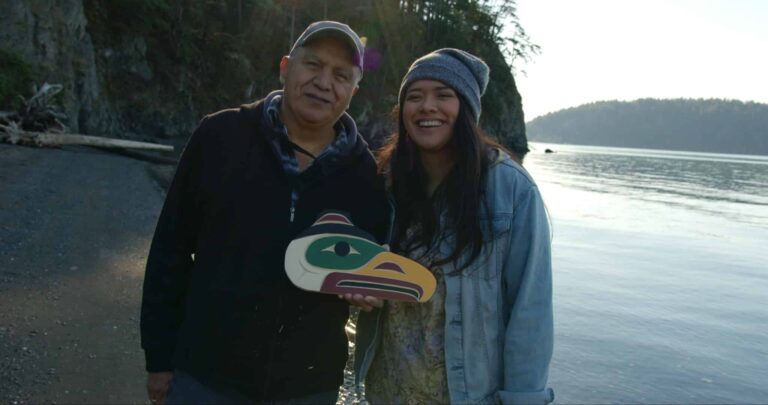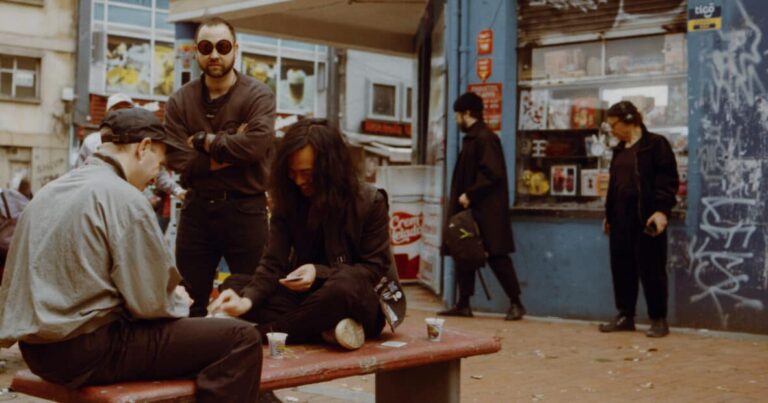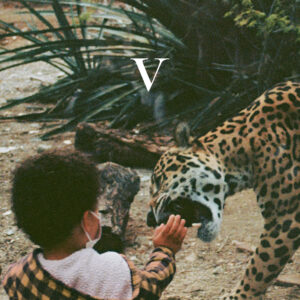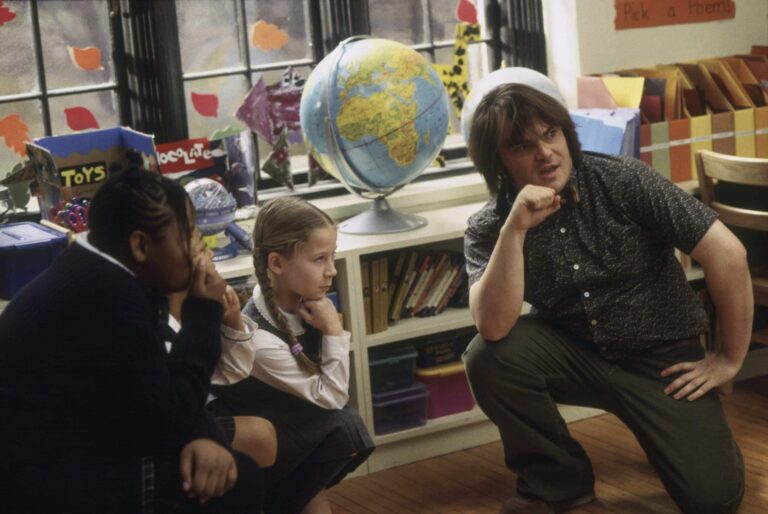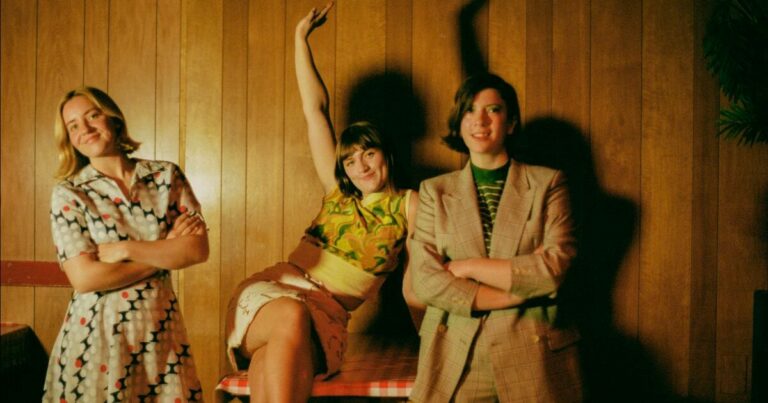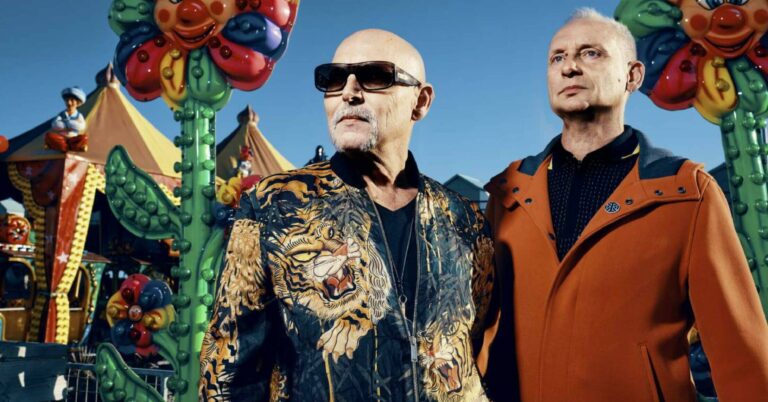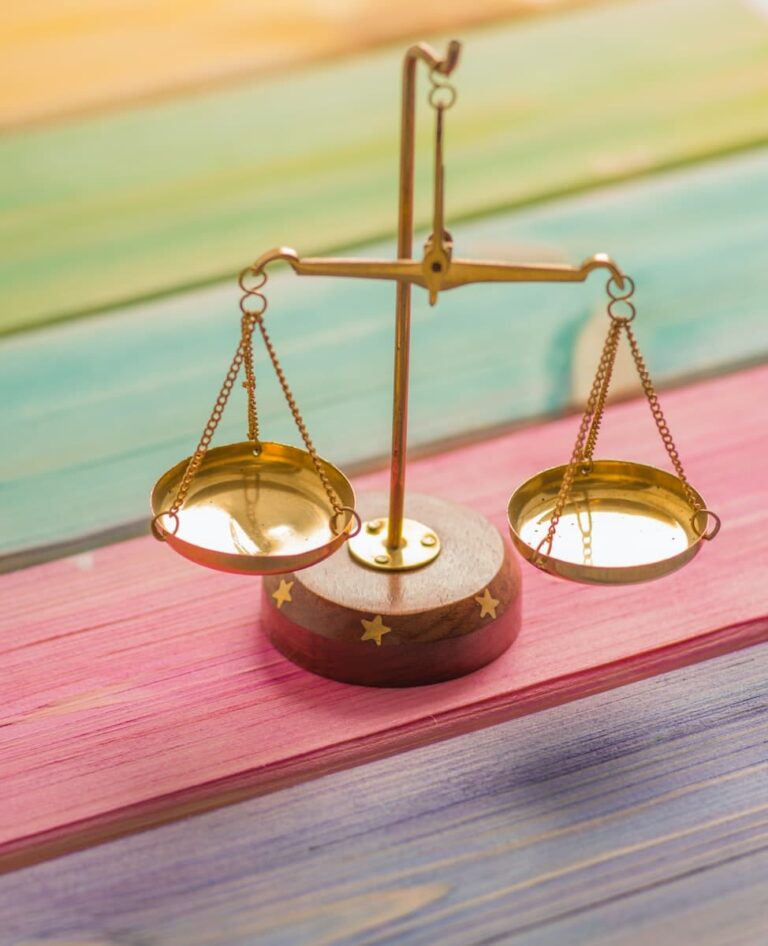Skrillex has teamed up with Palestinian vocalist, composer, and flute player Nai Barghouti for a new single called ‘Xena’. It’s the latest in a series of collaborative singles from Skrillex, following ‘Rumble’ with Fred again.. and Flowdan, ‘Way Back’ featuring PinkPantheress and Trippie Redd, ‘Leave Me Like This’ with Bobby Raps, and ‘Real Spring’ featuring Bladee. Check it out below.
Album Review: King Tuff, ‘Smalltown Stardust’
In Smalltown Stardust, Vermont native Kyle Thomas – known to the world by the moniker King Tuff – steers away from the blaring, dirty power-pop that marked 2014’s Black Moon Spell. While The Other, released just four years later, introduced a calmer, more cosmic version of his artistic self, Thomas leans into psych-folk with full force in his newest album, which serves as an expression of sincere gratitude for the simple things: wildflowers, pebbles and rivers, comforting romance, mindful meditation. Wrapped in rapture, the project comes as an especially welcome surprise in the middle of winter, with the sunny, hypnotising waves of Smalltown Stardust rendering it a portable summer.
The love for greenery that lies at the heart of the album creates an especially charming listening experience, calling forth the intoxicating effect of Mort Garson’s Mother Earth’s Plantasia. The opening track ‘Love Letters to Plants’ does exactly what it says on the tin, weaving a laudatory tune as it stays afloat with Sasami Ashworth’s angelic ascending harmonies. With a neat blend of minimoog, orchestral strings and bursts of drums complementing Thomas’ smooth vocals, the track symbolises Smalltown Stardust at its best, mixing intriguing instrumental compositions with fun, true-to-self lyricism: “Microtones make my gardens grow/ I only feel at home/ In wildflowers,” Thomas croons.
Unfortunately, much of the record’s lyrical space forgoes adventurousness altogether, too often veering to kitsch. “I’m ready to wake up/ Try to break up these fears” is one of several underwhelming songwriting moments on ‘How I Love’, soporific in its slow pace, something even the funky electric guitar strums can’t remedy. In fact, the tunes honing in on romantic love are precisely the ones that see Thomas fall into the traps of cliché. “We found each other/ Was it chance, or was it destiny?” he asks on ‘Pebbles In a Stream’ amidst Kinga Bacik’s soothing cello, leaving the listener aching for more specificity.
Smalltown Stardust is far more encouraging when it offers introspection and explorations of spirituality. The third track, a voice recording of 8-year-old Thomas attempting to deliver a guided meditation, is amusing and endearing in its innocence. “I would like to take the time to do a little mind stretching,” little Thomas says, and he seems to do just that in the succeeding ‘Portrait of God’. Serving as the high point of the album, the ebullient song asks us to “imagine the shape of God” while portraying King Tuff’s own experimentation with painting in his garage. Bringing us along to “walk in the woods, wade in the river, breathe in the mountain air,” the track is a not-so-subtle appreciation of the sublime, celebrating the grandeur of nature and the release granted by artistic expression.
‘Bandits of Blue Sky’ is harder to decipher, with dragged-out syllables and buoyant energy reminiscent of David Bowie. “Have you heard the news?/ There’s bandits on the loose/ They’re sneaking through your psyche/ And drinking all your juice,” chants Thomas on his break from personal storytelling, while drums, piano and cello melt together in the background to create an air of mystery. The most touching track, though, arrives at the very end with ‘The Wheel’. The noises accompanying the end of the track evoke images of a train arriving at its final destination; the wheels stop moving, but right when you expect utter silence to set in, the gentle chime of bells delightfully fulfills Thomas’ expressed hope that “when it stops, it isn’t really the end.”
King Tuff’s Smalltown Stardust does more than reshape his musical identity and demonstrate the significant transformation that has taken place since his debut in 2006. Thomas succeeds at doing what few can: capturing fleeting moments in all their glory. Whether extending love to a greenhouse, oil paint or crystal clear water, the songs feel like a tight embrace you didn’t know you needed, reminding you to pay more attention to little joys and – if at least for 38 minutes and 24 seconds – convincing you that everything is going to be alright.
Slipknot Release New Song ‘Bone Church’
Slipknot have dropped a new standalone single called ‘Bone Church’. The track comes paired with a video directed by M. Shawn ‘Clown’ Crahan that repurposes footage from the band’s ‘Yen’ visual. Check it out below.
“On the road, we have a ‘jam room’ set up backstage at every show, where we play, practice, warm up and sometimes try out new ideas,” Crahan said in a press release. “‘Bone Church’ started life in a jam room on the .5: The Gray Chapter tour. We’ve been bringing it closer and closer to life ever since, and finally, here it is. This one is for the fans – a further vision deeper into Slipknot’s history, which is still being written. Enjoy.”
Slipknot released their latest album, The End, So Far, last year.
Black Belt Eagle Scout Unveils Video for New Song ‘Spaces’
Black Belt Eagle Scout has shared a new song, ‘Spaces’, in the lead-up to her new album The Land, The Water, The Sky. Following earlier cuts ‘My Blood Runs Through This Land’, ‘Don’t Give Up’, and ‘Nobody’, the track arrives with an accompanying video directed by Evan Benally Atwood and Morningstar Angeline, with an original concept by Quinn Christopherson. Check it out below, along with the artist’s upcoming tour dates.
“I wrote ‘Spaces’ for an audience as a way to sing melodies of healing and care for them,” Katherine Paul explained in a statement. “Since starting Black Belt Eagle Scout, I have moved through many spaces, playing shows for crowds of people. I can’t always connect one on one with everyone and so this song is an attempt to bring my feelings of appreciation I have for everyone who supports my music to life. My parents lend their voices in the chorus melody, my dad with his strong pow wow voice and my mom with her wholesome tone that sounds so similar to mine you can barely notice the distinction between me and her. I want this song to be an offering for those who need to grasp onto something and feel because through feeling and being together, there is healing.”
Paul added: “It was incredible to incorporate my family trade of carving within the music video. My dad has been carving Coast Salish style art for over 50 years. I grew up around it and learned how to carve and paint when I was a teenager. This video shows a creation process and the kind of intimacy we give to our art. In the video, we carve an eagle out of yellow cedar. The eagle is representative of strength and guidance.”
The Land, The Water, The Sky will be released on February 10 via Saddle Creek.
Black Belt Eagle Scout Tour Dates:
Fri Feb 3 – Los Angeles, CA – Natural History Museum
Fri Feb 10 – Portland, OR – Aladdin Theater
Wed Feb 15 – Seattle, WA – Neumos
Fri Feb 24 – Manchester, UK – Night & Day
Sat Feb 25 – London, UK – Moth Club
Mon Feb 27 – Paris, FR – Le Pop Up
Tue Feb 28 – Brussels, BE – Botanique – Witloof Bar
Wed Mar 1 – Amsterdam, NL – Paradiso Upstairs
Thu Mar 2 – Copenhagen, DK – Stengade
Sat Mar 4 – Rotterdam, NL – Rotown
Sun Mar 5 – Berlin, DE – Badehaus
Fri Mar 31 – Eugene, OR – Soreng Theater
Sat Apr 1 – Spokane, WA – Lucky You Lounge*
Sun Apr 2 – Boise, ID – Neurolux*
Mon Apr 3 – Salt Lake City, UT – The DLC at Quarters*
Tue Apr 4 – Denver, CO – Larimer Lounge*
Thu Apr 6 – Iowa City, IA – Mission Creek Festival
Fri Apr 7 – Minneapolis, MN – Cedar Cultural Center*
Sat Apr 8 – Chicago, IL – Subterranean*
Apr 11 – Toronto, ON – The Legendary Horseshoe Tavern*
Wed Apr 12 – Montreal, QC – Bar Le “Ritz” P.D.B.*
Fri Apr 14 – Cambridge, MA – Elk’s Club*
Sat Apr 15 – Brooklyn, NY – Baby’s All Right*
Mon Apr 17 – Philadelphia, PA – Johnny Brenda’s*
Tue Apr 18 – Washington, DC @ Songbyrd*
Wed Apr 19 – Durham, NC – The Pinhook*
Thu Apr. 20 – Charlotte, NC – Snug Harbor*
Fri Apr 21 – Atlanta, GA – 529 Club*
Sat Apr 22 – New Orleans, LA – Gasa Gasa*
Mon Apr 24 – San Antonio, TX – Paper Tiger*
Tue Apr 25 – Austin, TX – The Parish*
Thu Apr 27 – Norman, OK – Norman Music Festival
Fri Apr 28 – Albuquerque, NM – Sister*
Mon May 1 – Mesa, AZ – The Underground at The Nile Theater
Tue May 2 – San Diego, CA – The Casbah*
Thu May 4 – Los Angeles, CA – The Echo*
Fri May 5 – Fresno, CA – Strummer’s*
Sat May 6 – San Francisco, CA – Rickshaw Stop*
Mon May 8 – Tacoma, WA – ALMA*
*with Claire Glass and Adobo
Unknown Mortal Orchestra Announce New Album ‘V’, Share Video for New Single ‘Layla’
Unknown Mortal Orchestra have shared the details of their next album: V comes out on March 17 via Jagjaguwar. They’ve also released a new song from it, ‘Layla’, alongside an accompanying video directed by Vira-Lata. Check it out below.
UMO band leader Ruban Nielson cites West Coast AOR, classic hits, weirdo pop, and Hawaiian Hapa-haole music as inspirations for the new album, which was constructed in Palm Springs, California and Hilo, Hawaii. He worked on V with his brother, Kody, as well as his father, Chris Nielson (saxophone/flute), and longtime Unknown Mortal Orchestra member Jacob Portrait. During the early days of the pandemic, Kody flew from New Zealand to Palm Springs to help Ruban with his songs, but Ruban had to travel to Hawaii to help care for a family member. After reuniting at a cousin’s wedding Hawaii, the brothers then returned to Palm Springs to finish the record.
“In Hawaii, everything shifted off of me and my music,” Nielson explained in a statement. “Suddenly, I was spending more time figuring out what others need and what my role is within my family. I also learned that things I thought were true of myself are bigger than I thought. My way of making mischief – that’s not just me – that’s my whole Polynesian side. I thought I was walking away from music to focus on family, but the two ended up connecting.”
V, which includes the early single ‘I Killed Captain Cook’, follows the 2018 records Sex & Food and IC-01 Hanoi.
V Cover Artwork:
V Tracklist:
1. The Garden
2. Guilty Pleasures
3. Meshuggah
4. The Widow
5. In The Rear View
6. That Life
7. Layla
8. Shin Ramyun
9. Weekend Run
10. The Beach
11. Nadja
12. Keaukaha
13. I Killed Captain Cook
14. Drag
School of Rock came out 20 years ago and it still “rocks”
We’ve seen a flurry of comedic movies and television series that centre on the story of a seemingly inept classroom teacher who turns inspirational. It seems to be a common premise, which has sparked sitcoms such as the NBC series A.P. Bio (starring Glenn Howerton) and films such as Bad Teacher (starring Cameron Diaz). But none of these compare to School of Rock, the cult classic musical comedy directed by Richard Linklater and starring Jack Black. In Jack Black’s top-ranked movie, he stars as Dewey Finn, a rock guitarist who is fired from his band and, desperate for money, pretends to be a private school teacher. Although inept at first, Dewey Finn begins to teach rock music to his students and he ends up inspiring them.
It’s been 20 years now since audience members rocked out and “stuck it to the man” with Jack Black’s Dewey Finn in School of Rock. Sure enough, the film has retained its popularity and still holds up. In short, after 20 years, School of Rock still “rocks,” with Jack Black’s goofiness, as well as the film’s addictive soundtrack and inspirational messages.
I was 16 years old and in Grade 11 when I first saw the cult comedy and I was instantly hooked. My immediate love of the film was partially because of the impressively fitting soundtrack, which includes an array of tracks from Led Zeppelin, The Who, The Ramones, and other legendary classic rock musicians. The film’s appeal is also due to the quirkiness that is Jack Black as he gets up to some shenanigans, pretending to be his roommate, substitute teacher Ned Shneebly (played by School of Rock writer Mike White).
Jack Black is delightfully funny and brings a balance of wackiness and lovability to the role of Dewey Finn. If you don’t believe Jack Black is a delight to watch on screen, clearly you’ve never seen him in The Holiday, in which he played leading man Miles, a romantic interest for Kate Winslet’s character Iris. Although Jack Black may not be recognized as a romantic interest, he brings a lovable goofiness that we can’t help but swoon over. He brings the same kind of nuanced comedy to School of Rock.
What also makes School of Rock a pleasure is its life lessons and messages of inspiration as Dewey Finn encourages his students to be themselves. I’m thinking of one specific scene here where Dewey and his band of private school students are about to go on stage for their audition for Battle of the Bands. Before they’re about to go on stage, student Tomika (played by Maryam Hassan) pulls Dewey aside to tell him she’s afraid to go on because she believes she might be ridiculed for her size. Instead of invalidating her concerns or telling Tomika that she’s not plus-sized, Dewey gives her a pep talk about body positivity.
“Tomika … you’ve got something everybody wants. You’ve got talent, girl,” Dewey tells her. “You have an incredible voice, and I’m not just saying that. You heard of Aretha Franklin, right? She’s a big lady. But when she starts singing, she blows people’s minds. Everybody wants to party with Aretha! And you know who else has a weight issue? … Me. But once I get up onstage, start doing my thing, people worship me. Because I’m sexy! And chubby, man.”
During the course of the film, Dewey also encourages shy student guitarist Zack (played by Joey Gaydos Jr.) to stand up to his domineering father. He even gets the uptight school principal Ros (played by Joan Cusack) to open up and embrace her love of rock music as well.
Even after 20 years, the heartwarming scene between Tomika and Dewey is still going viral and making an impact on viewers. As viewers have highlighted, the ironic part in all of this is that, even though Jack Black’s Dewey is initially only pretending to be a teacher, he ends up becoming a great one.
This is truly a testament to the resurgent popularity of School of Rock, a cult classic which brings a balance of quirkiness and life lessons that are still leaving its mark on fans. Now, please excuse me while I watch School of Rock again.
Girl Ray Release Video for New Song ‘Everybody’s Saying That’
Girl Ray have returnd with a new track, ‘Everybody’s Saying That’. Lead singer Poppy Hankin co-produced the single with Ben H. Allen, and it arrives with an accompanying video directed by Alice Harding. Watch and listen below.
“The lyrics on this single were inspired by the straight-to-the-heart simplicity of the disco greats,” Hankin explained in a statement. “I wrote it while missing my partner while on tour in 2020, and it plays on themes of new love and self-doubt. Musically we took reference from the nu-disco resurgence that seemed to be taking off in 2020, in particular from the likes of Kylie Minogue (Disco), Jessie Ware (What’s Your Pleasure?), Dua Lipa (Future Nostalgia) and Róisín Murphy (Róisín Machine). We were really inspired by all of these women re-imagining disco.”
Of the video, she added: “We met Alice, the director, while we were all working in a coffee truck on film sets over the pandemic. Alice is the special kind of person you can put total faith in and know she’ll make something amazing, so when she agreed to direct our video we were beyond excited. We wanted the video to have an emphasis on atmosphere and colour rather than narrative to fit in with the feel of the song, which Alice achieved wonderfully. Lyrically the song is about longing, and even though it was filmed in Slough, the video has pure Hollywood vibes thanks to a hugely talented cast and crew, and countless favours that Alice managed to pull in. We hope you enjoy it.”
‘Everybody’s Saying That’ marks the London three-piece’s first new music since 2021, when they released the Hot Chip-produced ‘Give Me Your Love’.
Orbital and Penelope Isles Team Up on New Song ‘Are You Alive?’
Orbital have teamed up with Penelope Isles for ‘Are You Alive?’, which is taken from the veteran duo’s upcoming album Optical Delusion – out February 17. It follows lead single ‘Dirty Rat’, a collaboration with Sleaford Mods. Listen to both tracks below.
“Are You Alive came about when I had the instrumental and felt it could do with a delicate vocal,” Orbital’s Paul Hartnoll said in a press release. “Enter Penelope Isles! They took it away and Lily came up with some killer hooks, we spent a day rearranging the song and Hey Presto! Are You Alive was born. But don’t be fooled by the sweetness of the sound, the lyrics have some bite. It’s a dog-eat-dog world…”
Check out our Artist Spotlight interview with Penelope Isles.
Artist Profile: Trudy Benson
Trudy Benson creates vibrant, multi-layered paintings inspired by digital aesthetics and imaging software. Her works feature a mix of hazy, gestural linework, and dizzying grids, created by hand using enamel, acrylic, oil, and spray paint. Benson expertly blends different colors, textures, styles, and shapes, creating dynamic and surprising compositions. Through her paintings, she explores the relationship between technology and human interaction, as well as the blurred line between digital and analog selves.
After earning her BFA from Virginia Commonwealth University, she went on to receive her MFA from Pratt Institute. Benson has exhibited her work in cities like New York, Los Angeles, Paris, Stockholm, and Geneva and her art can be found in esteemed collections such as the Portland Museum of Art, Aïshti Foundation, Saatchi Gallery, and Hudson Valley Museum of Contemporary Art.
Trudy Benson’s Solo Shows
| Solo Shows | Year | Exhibition | Venue |
|---|---|---|---|
| Trudy Benson | 2021 | / Z / Z / | Galerie Ceysson & Bénétière |
| Trudy Benson | 2020 | Join | Loyal |
| Trudy Benson | 2018 | Cuts, Paints | Team Gallery |
| Trudy Benson | 2018 | Infinite Spiral (Residency Show) | Dio Horia |
| Trudy Benson | 2017 | TRUDY BENSON | RIBORDY THETAZ |
What kind of cases do personal injury lawyers handle?
If you’ve been injured, you may be wondering what kind of personal injury case you have. There are many different kinds of cases that personal injury law firm handle, and each one is unique. Additionally, if you’ve had issues related to driving under the influence in Arizona, you might want to consider services like Arizona DUI Screening and Alcohol Screening Services. In this post, we will discuss some of the kinds of personal injury cases that lawyers take on. We will also provide tips on how to file a personal injury claim. Moreover, you can also opt for Preszler Injury Lawyers.
Car Accidents
If you’ve been injured in a car accident, you may be able to file a personal injury claim against the other driver.
Car accidents can be caused by many different factors, including:
– distracted driving
– drunk driving
– speeding
– weather conditions
Slip and Fall Accidents
If you’ve been injured in a slip and fall accident, you may be able to file a personal injury claim against the property owner.
Slip and fall accidents can be caused by many different factors, including:
– slippery floors
– cluttered floors
– uneven surfaces
– poor lighting
Medical Malpractice
If you’ve been injured by a medical professional, you may be able to file a personal injury claim against the doctor or hospital.
Medical malpractice can be caused by many different factors, including:
– errors in diagnosis
– errors in treatment
– surgical errors
– medication errors
Workplace Injuries
If you’ve been injured at work, you may be able to file a personal injury claim against your employer.
Workplace injuries can be caused by many different factors, including:
– unsafe working conditions
– hazardous materials
– workplace violence
– repetitive motion injuries
Wrongful Death
If you’ve lost a loved one due to the negligence of another person, you may be able to file a personal injury claim.
Wrongful death can be caused by many different factors, including:
– car accidents
– medical malpractice
– workplace injuries
– slip and fall accidents
Product Liability
If you’ve been injured by a defective product, you may be able to file a personal injury claim against the manufacturer.
Product liability can be caused by many different factors, including:
– design defects
– manufacturing defects
– labeling defects
– packaging defects
Assault and Battery
If you’ve been the victim of assault or battery, you may be able to file a personal injury claim.
Assault and battery can be caused by many different factors, including:
– domestic violence
– sexual assault
– hate crimes
– robbery
What should I do if I am injured in an accident?
If you’ve been injured in an accident, there are a few things you should do:
– Seek medical attention immediately. This is important for your health and for your personal injury claim.
– Get the contact information of any witnesses to the accident. Witnesses can provide valuable testimony if you decide to file a personal injury claim.
– Take photos of the scene of the accident, if possible. These photos can be used as evidence in your personal injury claim.
– Contact a personal injury attorney. An experienced personal injury attorney can help you navigate the legal process and maximize your chances of success.
How do I file a personal injury claim?
If you’ve been injured in an accident, you may be wondering how to file a personal injury claim. The process can be confusing and overwhelming, but we’re here to help.
There are a few things you’ll need to do:
– Gather evidence. This can include medical records, photos of the accident scene, witness statements, and more.
– File a personal injury complaint with the court. This is the document that starts the legal process.
– Serve the defendant with the complaint. The defendant has a certain amount of time to respond to the complaint.
– Engage in discovery. This is the process where both sides exchange information about the case.
– Go to trial. If the case can’t be settled out of court, it will go to trial.
If you’ve been injured in an accident, don’t hesitate to contact us. We can help you through every step of the personal injury claim process.
These are just a few of the kinds of cases personal injury lawyers handle. If you’ve been injured, it’s important to contact a Burbank personal injury lawyer as soon as possible. A personal injury lawyer will review your case and help you determine if you have a valid personal injury claim. Contacting the Law Offices of Tim D. Wright is the best way to ensure that you receive the compensation you deserve.

